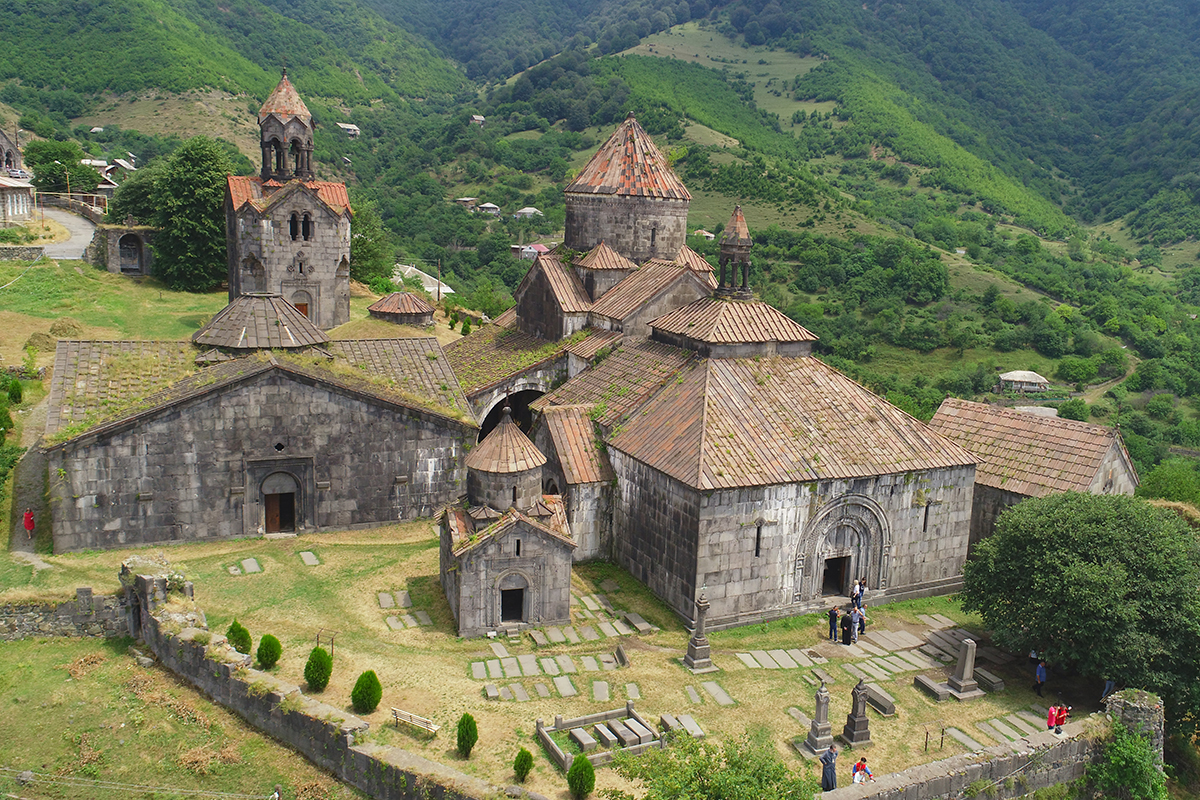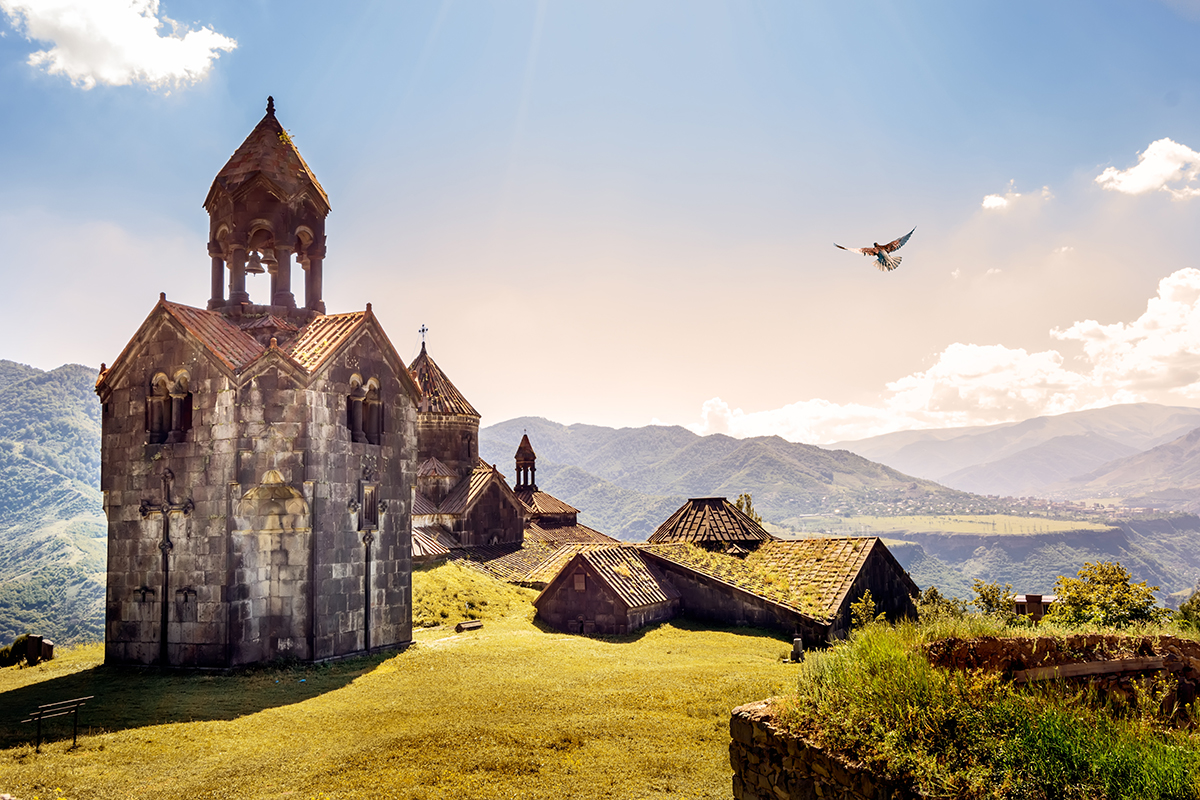Described as an outstanding example of Armenian medieval religious architecture, the 10th-century monastic complex of Sanahin is located in the village of the same name just above the city of Alaverdi. It is believed that the site was a center of worship from as early as the 4th century. But the oldest church of the monastery, the Church of Virgin Mary, was built in the first half of the 10th century, during the reign of King Abas I Bagratuni.
According to the legend, the name of the monastery of Sanahin is a result of a quarrel that arose between the master architect and his son during the construction of the complex. It is said that a prince from Sanahin hired a renowned architect to build a monastery. The architect began the construction together with his son, but as they carried on with their work, a conflict arose between them. The son abandoned his father and left Sanahin.
On the way, he crossed paths with another prince who hired him to build a church. And so the old master’s son started his work. As the walls of the church were growing taller, they soon became visible from Sanahin. His father, noticing the construction, decided to visit the site. Upon seeing his son, the old master asked, “What are you building?” “The wall of victory,” the son answered. His father then pointed at the church he was building and said, “Remember that that one is older than this.” This phrase in Armenian is “Sa nranic hin eh.” Thus, the monastery became known as Sanahin.
 Quick Info
Quick Info
What's Nearby
The main church of the Sanahin monastery, the Cathedral of Holy Redeemer, was built in 966 by King Ashot the Merciful and Queen Khosrovanush in honor of their sons Kiurike and Smbat. The royal family also founded a congregation and a religious school here, inviting clerics, highly educated archimandrites, and scribes to settle at Sanahin. The monastery soon became the residence of the diocese of the Kiurikian Kingdom, which resulted in the rapid growth of the complex.
Today, Sanahin monastery consists of the Church of Virgin Mary (between 928 and 944) and the Cathedral of Holy Redeemer (completed in 966), each with its own narthex (build in 1211 and 1181 respectively), the academy (constructed in the end of the 10th and the beginning of the 11th century), the belfry (completed in 1235), and the book depository (erected in 1063). Other structures include the Kiurikian and Zakarian sepulchers, the 10th-century St. Gregory chapel, the refectory, etc.


The seminary, or the academy of Sanahin, is especially noteworthy. Set in the gallery of the narthex of the Church of Virgin Mary, it is a unique example of civil architecture. The building features niches in the walls that are set close to each other, likely used as seats by learners during the lessons. Sanahin’s academy was a major center or learning, where besides theology they taught many other subjects, such as philosophy, calligraphy, medicine, rhetoric, music, calendar science, etc. The most prominent of Sanahin’s teachers was the Armenian philosopher and scientist Grigor Magistros Pahlavuni․ In his “Letters,” Grigor Magistros provided valuable information on the political and religious issues of his time, as well as expressed his thoughts and ideas on biology, astronomy, theory of music, aesthetics, literature, mythology, medicine, and natural sciences.
Together with the nearby Haghpat monastery, the monastic complex of Sanahin was included in the UNESCO World Heritage list as a fine example of a combination of traditional Armenian architecture and ecclesiastical Byzantine architecture.






















